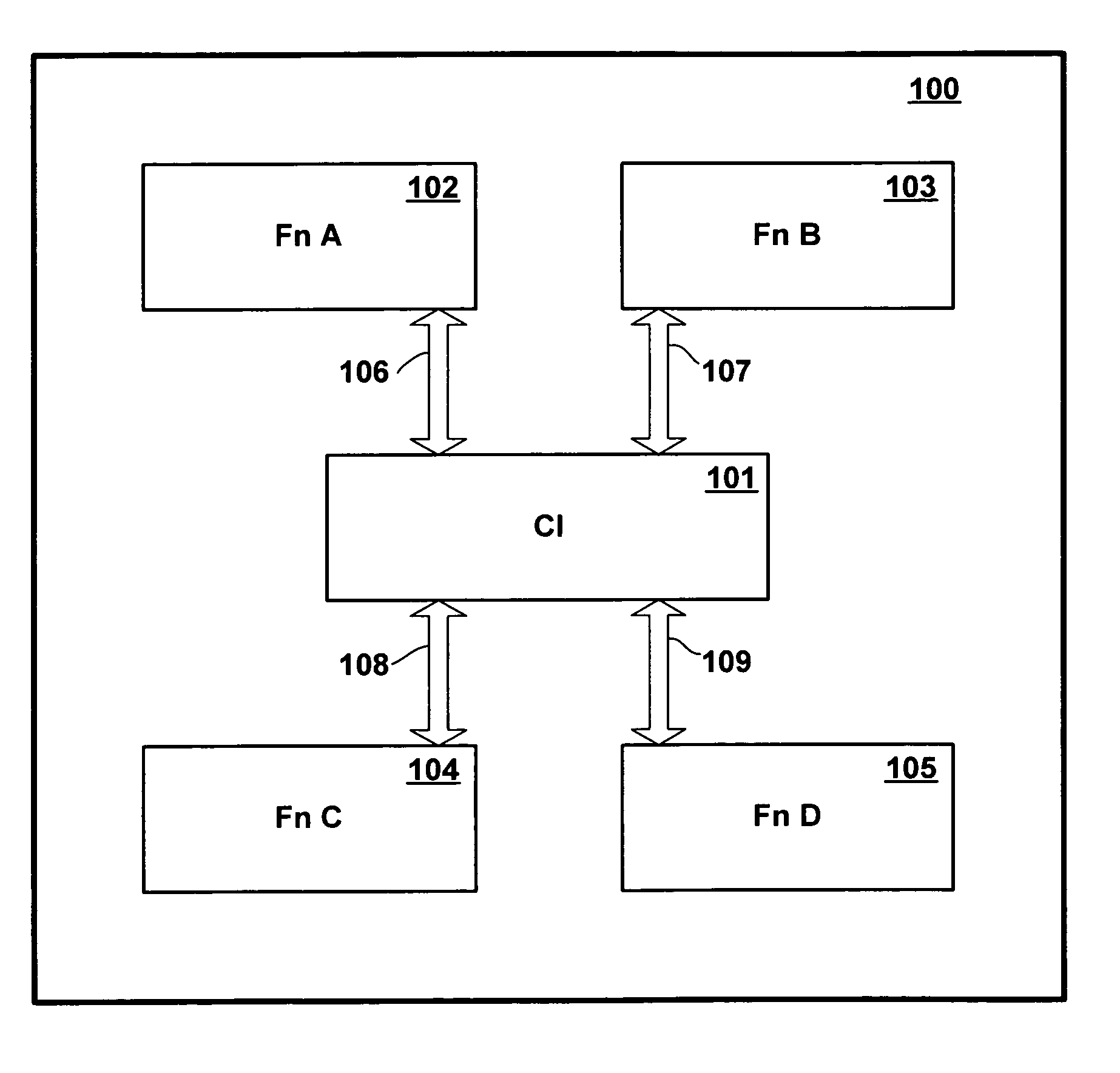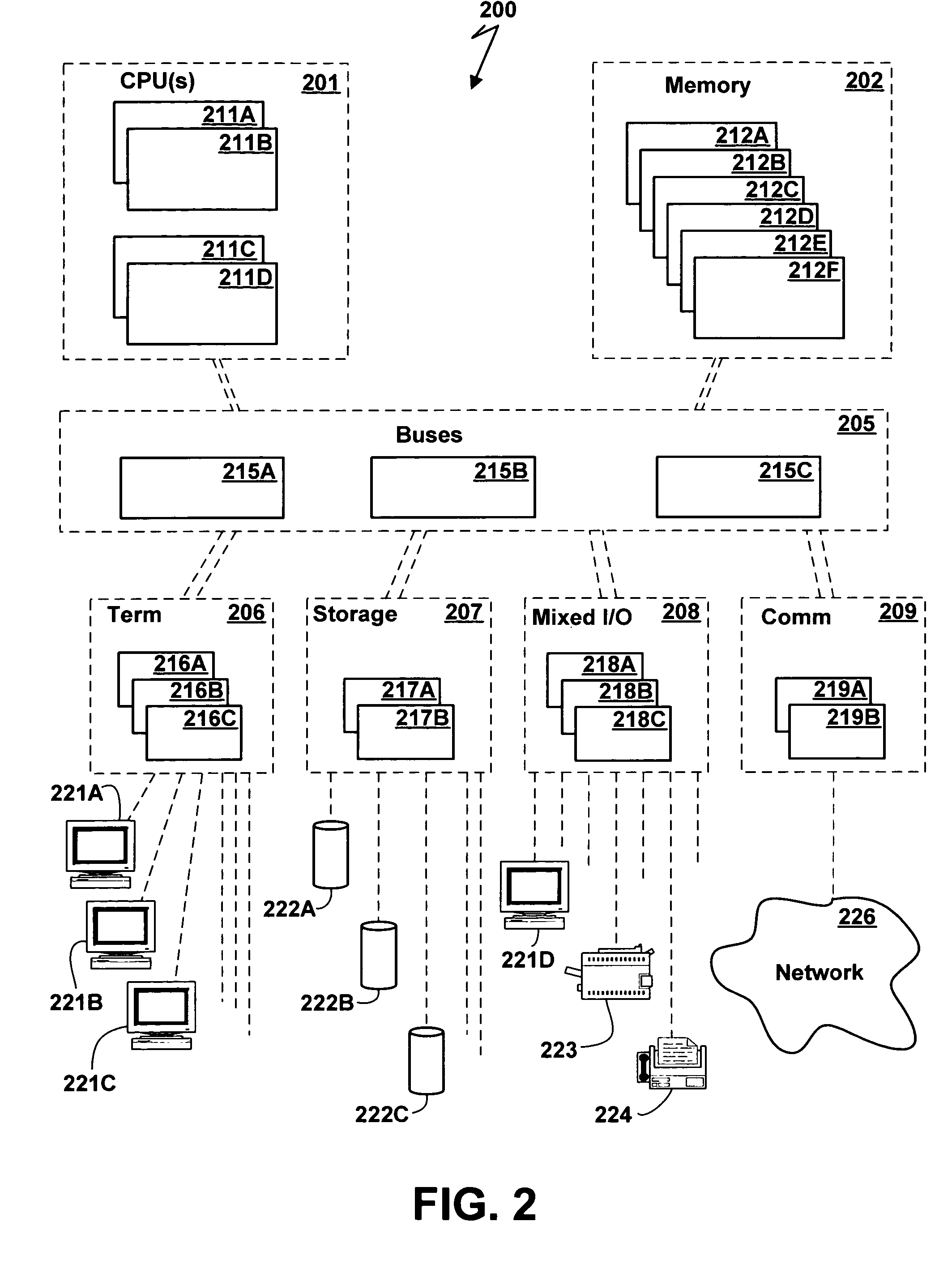Data communication method and apparatus utilizing programmable channels for allocation of buffer space and transaction control
a data communication and buffer space technology, applied in the field of digital data processing hardware, can solve the problems of increasing the complexity of the modern computer system, the cost of capability, and the complexity of the digital computer system itself, and achieve the effect of being ready to adapt to the connection
- Summary
- Abstract
- Description
- Claims
- Application Information
AI Technical Summary
Benefits of technology
Problems solved by technology
Method used
Image
Examples
Embodiment Construction
Digital Data Processing Environment
[0045] The present invention relates to the design of digital communications interfaces. In the preferred embodiments, a modular architecture is employed in the design of an integrated circuit chip, whereby a central interconnect module within a chip facilitates data transfer among multiple functional component modules of the chip. Using this architecture, it is possible to design a family of different application specific integrated circuits (ASICs) performing diverse functions, all of which employ a similar central interconnect module design for facilitating internal data transfer. In the exemplary embodiments of the invention described herein, an ASIC performs the function of an I / O bridge interface between different buses of a general-purpose computer system. However, this is but one of many possible implementations and digital data environments in which the present invention might be employed.
[0046] Referring to the Drawing, wherein like nu...
PUM
 Login to View More
Login to View More Abstract
Description
Claims
Application Information
 Login to View More
Login to View More - R&D
- Intellectual Property
- Life Sciences
- Materials
- Tech Scout
- Unparalleled Data Quality
- Higher Quality Content
- 60% Fewer Hallucinations
Browse by: Latest US Patents, China's latest patents, Technical Efficacy Thesaurus, Application Domain, Technology Topic, Popular Technical Reports.
© 2025 PatSnap. All rights reserved.Legal|Privacy policy|Modern Slavery Act Transparency Statement|Sitemap|About US| Contact US: help@patsnap.com



